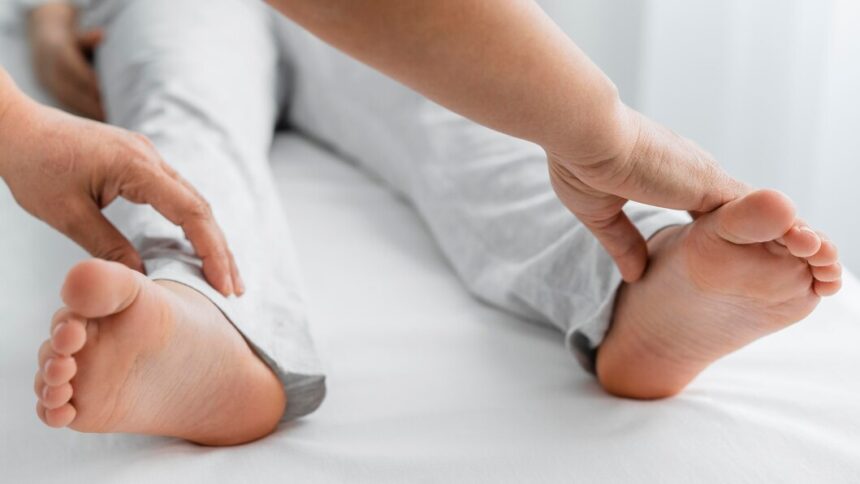Plantar fasciitis is a common foot condition that affects many individuals, particularly active adults and athletes. It involves inflammation of the plantar fascia, a thick band of tissue that runs along the bottom of the foot, connecting the heel bone to the toes. Here’s a comprehensive guide to understanding plantar fasciitis, including its symptoms, causes, and available treatments.
Symptoms of Plantar Fasciitis:
- Heel Pain: The hallmark symptom is pain at the bottom of the heel, usually felt with the first steps in the morning or after prolonged periods of rest.
- Stiffness: The foot may feel stiff and tight, especially after sitting for a while or during prolonged standing.
- Pain with Activity: Pain often worsens with activity and can be particularly intense after exercise or prolonged walking.
- Tenderness: The bottom of the foot may be tender to the touch, especially near the heel.
Causes of Plantar Fasciitis:
- Overuse or Strain: Repetitive activities that put stress on the heel and attached tissue, such as running, dancing, or standing for long periods, can lead to micro-tears and inflammation of the plantar fascia.
- Foot Mechanics: Issues like high arches, flat feet, or abnormal walking patterns (gait abnormalities) can increase stress on the plantar fascia, contributing to its inflammation.
- Age and Weight: Plantar fasciitis is more common in middle-aged individuals and those who are overweight or obese, as excess weight can strain the plantar fascia.
- Footwear: Wearing shoes with inadequate support or being on hard surfaces for extended periods can also contribute to the development of plantar fasciitis.
Treatments for Plantar Fasciitis:
- Rest and Ice: Resting the foot and applying ice packs can help reduce inflammation and alleviate pain.
- Stretching and Exercises: Gentle stretching exercises for the calf muscles and Achilles tendon can help relieve tension on the plantar fascia. Strengthening exercises for the foot and ankle muscles may also be beneficial.
- Orthotics: Shoe inserts or orthotic devices can provide support and cushioning to reduce strain on the plantar fascia.
- Footwear Modifications: Wearing supportive shoes with good arch support and cushioning can help alleviate symptoms and prevent recurrence.
- Physical Therapy: A physical therapist can provide targeted exercises and techniques to improve flexibility and strength in the foot and ankle.
- Medications: Nonsteroidal anti-inflammatory drugs (NSAIDs), such as ibuprofen or naproxen, may be recommended to reduce pain and inflammation.
- Steroid Injections: In some cases, corticosteroid injections may be administered directly into the painful area to provide short-term relief of symptoms.
- Surgery: In rare cases where conservative treatments fail to alleviate symptoms, surgical intervention to release the plantar fascia (plantar fascia release) may be considered.
Prevention:
- Gradual Progression: Avoid sudden increases in physical activity or changes in intensity.
- Proper Footwear: Wear supportive shoes appropriate for your activity level and foot type.
- Stretching: Incorporate regular stretching exercises for your feet and calf muscles into your routine.
- Maintain a Healthy Weight: If overweight, strive to achieve and maintain a healthy weight to reduce strain on your feet.
Plantar fasciitis can be a persistent and uncomfortable condition, but with appropriate treatment and lifestyle adjustments, most individuals can find relief and resume their normal activities. It’s essential to seek medical advice if symptoms persist or worsen despite conservative treatments. By understanding the causes and implementing effective management strategies, you can better manage and prevent plantar fasciitis for long-term foot health and comfort.










